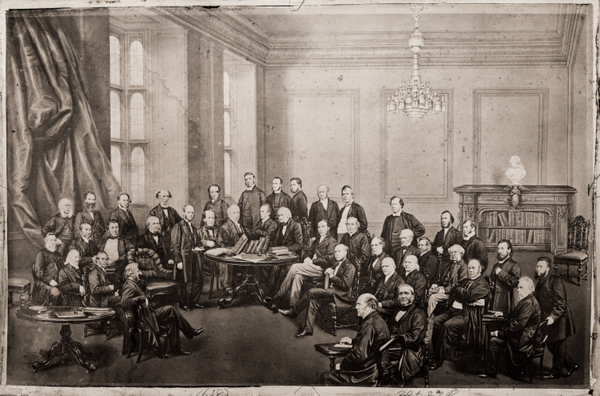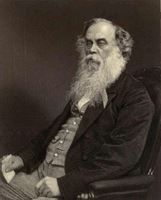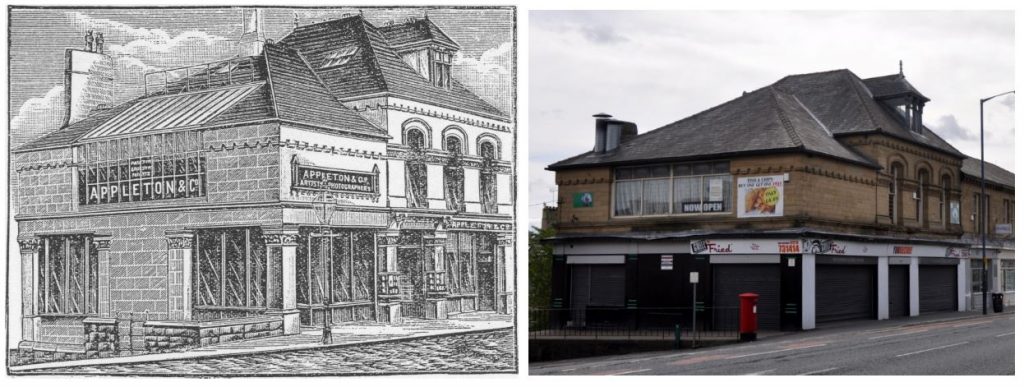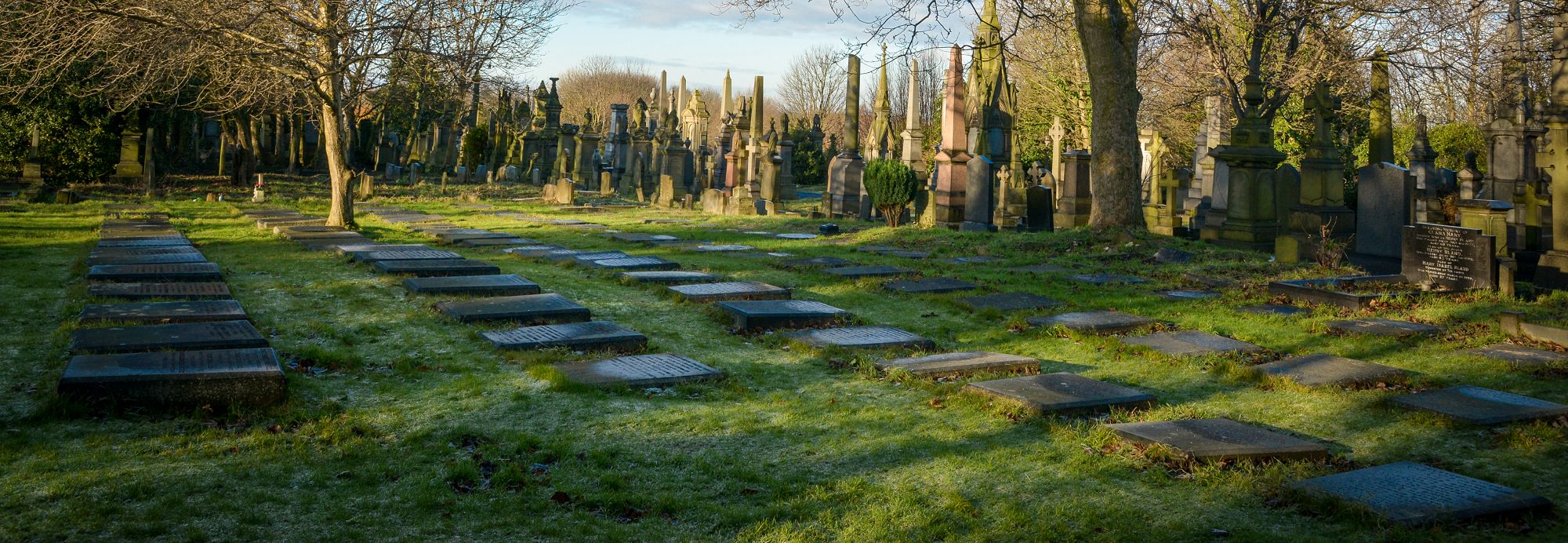Thomas William Appleton
Thomas William Appleton was born in 1828 in Yarm, Yorkshire. His father was a Miller and Corn Merchant.
He served an apprenticeship at Meeks in Manchester. He later moved to Bradford and worked with his brother Laurence Frederick Appleton running a Linen Drapery business at 22, Westgate, Bradford. In 1851 they employed four assistants. But soon after Lawrence decided to emigrate to Melbourne, Australia, and so the partnership was wound up in August 1854 and soon after that the business was sold.
In 1851 Thomas married Anne Green and they had eight children. Six daughters and two sons. The eldest son was Richard James Appleton. The other son was Henry William Appleton b1864
The earliest advertisement that can be found for Thomas operating a photographic business is in the Richmond and Ripon Chronicle 1st Dec 1855, and it reads as follows.
“Appleton & Co. Photographic Artists, Beg to apprise the Gentry and Inhabitants of Ripon, that as their stay is drawing to a close, they will feel obliged to those parties who wish for one of their life-like portraits , to favor them with an early call. Gallery opposite Proctor’s Hotel in Market Place, open 9am to 4pm”
It was 1854 when Desderi introduced the carte de visite format, which made portrait photographs affordable by the general public, so it was a perfect time for Appleton to start his business.
The post office directory of 1857 shows the business to be operating from Skell Bank, Ripon and in 1858 from Western Hill, Durham. An advertisement in the Durham Chronicle 2nd April 1858 indicated that Thomas was now working with H Berlon from Sunderland. Henry Berlon was a member of the Palatine Lodge No.114 in Sunderland and he transferred his membership to the Lodge of Hope No.302 in Bradford in April 1859, which would seem to indicate that he had now settled there. His occupation in the ledger shows that he was an artist. Berlon was a naturalised British subject, born in Prussia in 1824.
Shortly afterwards an advertisement appeared in the Bradford Review 28th May indicating that Appleton & Co were operating from the bottom of Horton Lane and that their stay was drawing to a close. They asked for particular attention to be drawn to their “Finely finished paper pictures” and that they were having a clearance of their stereoscope slides before leaving.
It would appear therefore that Thomas and Henry Berlon were operating from a number of locations before deciding to set up a permanent base in Bradford, in 1859. A statement on the reverse of many of Appleton’s carte de visite suggests that the business was established in 1859. Other sources suggest the business started in 1853 or 1856 and these must refer to the two men operating from other locations.
The business’s permanent base in Bradford and his partnership with Henry Berlon was at the top of Manor Row, on a site where the old Yorkshire Penny Bank still stands, they also opened a studio at 7 Horton Lane. An advertisement appeared in the Bradford Observer 1st Dec 1859 and it reads as follows.
“Photographic Establishment – Bottom of Horton Lane
In order to meet the requirements of their increasing business and at the solicitation of numerous Patrons Appleton & Co have decided on a considerable enlargement of their present premises, so as to give increased comfort and accommodation. The alterations they hope to have in a few days. “
Perry’s Bankrupt Gazette 19th Dec 1863 reported that the partnership based at Horton Lane and Manor Row had ceased on the 21st Nov 1863. Berlon made an announcement in the Bradford Observer on the 7th Jan 1864 which says.
“Mr Henry Berlon (late Appleton & Co) respectfully informs his numerous friends and the public that, since the dissolution of partnership, he continues the PHOTOGRAPHIC BUSINESS, at the top of Manor Row, on his own account and will endeavour to merit a continuance of the patronage he has hitherto enjoyed” In the same publication Appleton announced that he had bought the freehold of some land at the bottom of Horton Lane and contracted for the erection of an establishment “which for extent and perfection of its arrangements and appointments shall be second to none in the provinces” While the new studio was being constructed he moved his Gallery to the bottom of Manchester Road.
The Methodist Ministers

You only have to look through a small collection of carte de visite’s from the Appleton studios to find examples of ministers or preachers particularly Methodist ministers. It is unusual to be able to put a name to any of these portraits, however, a collection came up for auction recently which were from an album and nearly all the ministers were actually named. How accurate the naming was remains to be seen. One of the images was a composite made up of forty individual portraits. It was dated 1866. This was the year in which the ministers had chosen to hold their annual conference in Leeds. A press report printed in the Bradford Observer on the 7th Feb 1867 describes the image and says “it was finished in sepia with great artistic skill” Appleton made the picture available for sale in various sizes, including 8 x 10 for 7/6, 13 x 20 for 21/- , 20 x 32 for 63/- excluding mount. 5 It was also reported in a small advertisement in the same edition of the newspaper that Appleton’s had on display in their rooms in Horton Lane a “large photographic picture (38 in x 25 in) of the principal ministers and laymen of Methodism.” There was obviously a demand for portraits of local ministers and preachers but this also raises an interesting question, was this a way of the photographic studios generating more sales or was it a way of raising funds for the church and instigated by the church itself? Within the group are Isaac Holden, 2nd from the left on the back row and William Morley Puncheon.
Portrait of Sir Titus Salt

Throughout their careers Thomas and later Richard James Appleton photographed some very important people in Bradford of which Titus Salt was one. There is probably no portrait from any Leeds or Bradford Studio photographer that is more well known and more widely used than this one. On the 17th May 1870 it was reported in the Bradford Observer that the Appleton studio in Horton Lane had a life size portrait of Sir Titus Salt,Bart,in oil which had been taken direct from a small photograph. It represented Sir Titus sitting in an easy chair holding a letter in his hand. A photograph with this description was registered for copyright on 4th May 1869. This may have been the same image which appears in the book Yorkshire Past and Present. Vol 1 and is shown here. The image in the book is in actual fact a copy of an engraving by William Holl based on the original photograph. A copy is held by the National Portrait Gallery. G Daniels also produced an oil painting of this image and it is held by the Bradford Museum service, they have dated it 1879. This is currently displayed at Cartwright Hall Art Gallery in Bradford. Another coloured version of the image, possibly a copy of the painting held by Bradford Museums can be found at the Lord of the Manor Public House in New Crofton Nr Wakefield, a place where Titus Salt used to live, most definitely before it became a Public House! More copies of the image which have been coloured and possibly completely redrawn appear in the book ‘The Modern Portrait Gallery’ by Cassell, Petter and Galpin and appear on the website www.sciencephoto.com. Even Wetherspoons have fallen in love with this image. Further investigation is required before it can be determined if the Daniels painting is the same one referred to in the Bradford Observer article. What is also interesting about this portrait is the fact that if the oil painting referred to by the Bradford Observer was based upon a small photograph and the Holl engraving must have been based upon that same photograph, so where is the photograph? In fact a Woodbury version of the original photograph appears in the book ‘Historical Notes of the Bradford Corporation’ published in 1881 by Thomas Brear and in the book ‘Sir Titus Salt his life and its lessons’ published in 1877 by Hodder and Stoughton. Both these Woodburys are a cropped version of the full image. Further research has revealed that an even earlier version of the image was printed in the Illustrated London News 2nd Oct 1869. This more or less confirms that the 1869 date is the correct one.
The studio in Manningham Lane.

In 1872 Thomas Appleton wishing to expand the business opened a studio at 60 Manningham Lane Bradford and in 1887 took the adjoining premise at No 58 Manningham Lane. A The premises were at the junction of Spring Gardens and incorporated a glass roof studio. The book Industries of Yorkshire published in 1888 describes the studio. “The stately and elegant entrance to this studio is more suggestive of a public art gallery than of the business premises of a private firm, but on proceeding further it is quite in keeping with the rest of the place, the fine staircase and the large and lofty rooms relete with all requisite accessories, confirming the first favourable impression. After a visit to this magnificent establishment and a careful examination of the specimens of photography shown there, one feels that Messrs. Appleton Co are in every way deserving of the patronage they receive from the elite of the West Riding. Messrs Appleton & Co are licensees for the Van der Weyde, Platinotype, Autotype and other processes and during the period that they have been in business they have sought by diligent study on their own part and by taking advantage of all modern discoveries, to contribute to the advancement of their beautiful art. Not satisfied with the fame they have acquired in photography Messrs. Appleton and Co have recently added to it in other directions, having opened a spacious shop at 58 Manningham Lane where they are already doing a large wholesale and retail business as manufacturers of photographic apparatus and dealers in chemicals and other goods used in the art. “…………. “ This enterprising firm are also widely known as manufacturers and dealers in dissolving view apparatus, their lanterns, either for oil or limelight, being exceptionally good, while their many thousands of artistic photographic transparencies are unsurpassed, if equalled, by any firm in the country.”It would appear then that the premises at 58 Manningham Lane was not set up simply to extend the studio but it was set up to expand and diversify the business with Richard James Appleton taking a prominent role establishing a wholesale and retail side. It might be suggested that the Appletons were edging their bets here. Amateur photography was beginning to take off and so there was a demand through retail for cameras, consumables and accessories but there was also still a considerable demand from professional photographers to source product from wholesalers. Perhaps even at this stage Richard Appleton had an eye on Percy Lund’s Photographic business and the full range of product that Percy Lund was offering to the trade via his journal The Photographers World (1886-1889) and later The Practical Photographer (1890-1895) . Percy Lund’s catalogue of 1887 shows the vast range of product being offered. The property at No 58 and No 60 Manningham Lane still stands today and the exterior of the building has changed little since the 1880s , see photo above.
The Mayors of Bradford
The Appleton studios were responsible for a number of excellent portraits of Bradford Mayors. The portraits appear in the book “Historical Notes on the Bradford Corporation” by William Cudworth. The book was published by Thomas Brear in 1881 and the images are of the Woodbury type, still as good now as the day they were produced. In fact this book serves as testament to the excellent work and the longevity of the Appleton’s business. There are portraits of eighteen Mayors of Bradford in the book, seventeen of them taken by Appleton & Co including those of, Robert Milligan the first Mayor of Bradford (shown right), Sir Titus Salt Bart, William Rand, Sam Smith, Henry Brown, Isaac Wright, Charles Semon, John Venimore Godwin, William Brashaw, James Law, Edward West, Mark Dawson, Manoah Rhodes, Henry Mitchel, Wilson Sutcliffe, George Motley Ward and Briggs Priestley. The eighteenth portrait is that of Angus Holden taken by Albert Sachs.
Death of Thomas William Appleton
Thomas Appleton died in 3rd February 1912 aged 84 his probate details are as follows:
Appleton, Thomas William of 15 Oak Villas Bradford died 2 Feb 1912 Probate London 4 April to George Edwin Waddington merchant James Strickland Mawson cashier and Cecil Hartley stuff merchant. All three were Son in Laws. Effects £ 4441 8s 1d
Thomas William Appleton’s obituary in the Bradford Weekly Telegraph – 9th February 1912
“Mr Thomas William Appleton who died on Saturday last at 15, Oak Villas, Manningham had a long and interesting business career, he being established in Bradford for about forty years as a photographer. He first started business in Bradford as a draper in Westgate, having served his apprenticeship at Meek’s Manchester. In 1853 with a partner named Berlon, he established a studio at the top of Manor Row, on the site where the Yorkshire Penny Bank now stands.
The business transferred in 1865 to the bottom of Horton Lane and 1872 he opened up a branch in Manningham lane at the premises now occupied by Gunston & Co. Previous to opening the Manningham Lane branch he resided at Wike but then he went to live at 15 Oak Villas, Manningham, which he occupied to the time of his death. He retired from business in 1897 at the age of 70.
He was a member of the Wesleyan Methodist body and attended Carlisle Road Wesleyan Chapel at which place he was trustee. Mr Appleton who leaves two sons and five daughters stood over 6ft in height and on the morning of his death was out walking, but succumbed to heart failure later in the day.”
Thomas Appleton is buried with his wife Ann and daughters Isabella and Amelia at Undercliffe Cemetery. Not too far away are the graves of the some of the most important industrialists and merchants of Bradford such as the Holdens and the Illingworths along with the Mayors of Bradford, many of which the Appletons photographed.
You can find the Appleton’s monument using the what3words App and website. Follow this link and select satellite view. Click Here. If you are using the App on your phone type in mouse.spared.woods in the search box.
Research by Steve Lightfoot as part of the Leedsandbradfordstudio project.


